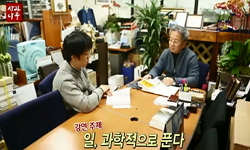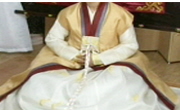This paper attempts to show how Yi Sang’s “A Memorandum On A Line 1~7” can be interpreted mathematically and scientifically, thereby giving those seven poems a complete interpretation, which has been sorely lacking in the Korean criticism sector...
http://chineseinput.net/에서 pinyin(병음)방식으로 중국어를 변환할 수 있습니다.
변환된 중국어를 복사하여 사용하시면 됩니다.
- 中文 을 입력하시려면 zhongwen을 입력하시고 space를누르시면됩니다.
- 北京 을 입력하시려면 beijing을 입력하시고 space를 누르시면 됩니다.
李箱 詩와 과학적 함의 : 「線에關한覺書 • 1~7」을 중심으로 = Yi Sang’s Poetry and the Scientific Connotation of the Poetry
한글로보기https://www.riss.kr/link?id=T12138346
- 저자
-
발행사항
경산 : 대구가톨릭대학교 일반대학원, 2010
-
학위논문사항
학위논문(석사) -- 대구가톨릭대학교 일반대학원 , 국어국문학과 현대 시 , 2010. 8
-
발행연도
2010
-
작성언어
한국어
- 주제어
-
발행국(도시)
경상북도
-
형태사항
80 ; 26 cm
-
일반주기명
지도교수: 장도준
- 소장기관
-
0
상세조회 -
0
다운로드
부가정보
다국어 초록 (Multilingual Abstract)
This paper attempts to show how Yi Sang’s “A Memorandum On A Line 1~7” can be interpreted mathematically and scientifically, thereby giving those seven poems a complete interpretation, which has been sorely lacking in the Korean criticism sector. Many Korean literary scholars, including experts on Yi Sang’s poetry, have tried in vain to interpret “A Memorandum On A Line 1~7” without mentioning the science and mathematics clearly present in the those poems. Those literary scholars (Kim Myung-Hwang, Yi Seung-Hoong, Kim Young-Yoong, and Oh Jung-Lan) have repeatedly picked and chose only small sections of “A Memorandum On A Line 1~7” and interpreted those sections without trying to give a complete translation of “A Memorandum On A Line 1~7.”
The research of this paper covers an individual interpretation of each “A Memorandum On A Line 1~7.” Yi Sang was obviously affected by Einstein and his Theory of Relativity, which is clear with just a basic reading of “A Memorandum On A Line 1~7.” Einstein was very famous at the time Yi Sang was writing “A Memorandum On A Line 1~7,” and Yi Sang makes repeated references and allusions of the Einstein’s Theory of Relativity.
“A Memorandum On A Line 1” focuses on the flow of time (the fourth dimension) and how people are affected by this flow of time. Time, according to Einstein, is relative and it has a connection with light (especially when light speed is involved).
“A Memorandum On A Line 2” talks about light and how it can be controlled with lenses. And, Yi Sang makes special reference to Euclid and his Two Dimensional Geometry, which became obsolete with the advent of The Theory of Relativity and the so-called New Sciences.
“A Memorandum On A Line 3” is the most mathematical of all the “A Memorandum On A Line 1~7” because there is actually a math equation in the poem itself. “A Memorandum On A Line 3” focuses on rotation of an object in three dimensions.
In “A Memorandum On A Line 4,” Yi Sang artistically tries to express the scientific representations of the second dimension, the third dimension, and the fourth dimension by metaphorically comparing them to real world objects. This is done to help the reader imagine concepts that are already difficult to express.
“A Memorandum On A Line 5” focuses on time travel. To Yi Sang, time travel is a way to go back in time and correct one’s past mistakes. Yi Sang talks about time travel very scientifically and repeatedly uses ideas brought up by Einstein in his Theory of Relativity.
“A Memorandum On A Line 6” focuses on Quantum Physics. Quantum Physics and how it deals with time has become an almost surreal idea to many people.
In “A Memorandum On A Line 7,” Yi Sang talks about how people perceive objects with their eyes when light bounces off an object and our eyes catch that light and interpret it.
Therefore, when “A Memorandum On A Line 1~7” are put into the context of mathematics and science, the meaning becomes very clear and brings the poems into a coherent flow that has been lacking in Yi Sang criticism since Yi Sang wrote “A Memorandum On A Line 1~7” in the 1930’s. However, doing a scientific/mathematical interpretation of “A Memorandum On A Line 1~7” yields more of a science/mathematical thesis than a literary thesis, but that fact is unavoidable, because Yi Sang obviously intended to write “A Memorandum On A Line 1~7” about science and mathematics. Therefore, the science and math cannot be separated from “A Memorandum On A Line 1~7,” and a completely literary interpretation (minus the science and math) is impossible if a clear meaning “A Memorandum On A Line 1~7” is to arise.
목차 (Table of Contents)
- I. 서론 1
- 1. 연구 목적 1
- 2. 선행 연구 검토 4
- 3. 연구 방법 및 범위 5
- II. 이상과 과학적 지식 8
- I. 서론 1
- 1. 연구 목적 1
- 2. 선행 연구 검토 4
- 3. 연구 방법 및 범위 5
- II. 이상과 과학적 지식 8
- III. 시「線에關한覺書」의 과학적 함의 10
- 1.「線에關한覺書 • 1」-광선의 움직임 10
- 2.「線에關한覺書 • 2」-빛의 속성 24
- 3.「線에關한覺書 • 3」-삼차원적 회전 34
- 4.「線에關한覺書 • 4」-이차원에서 사차원으로 41
- 5.「線에關한覺書 • 5」-시간 이동 45
- 6.「線에關한覺書 • 6」-양자의 움직임 57
- 7.「線에關한覺書 • 7」-빛의 반사 64
- Ⅳ. 결론 70
- 참고 문헌 74












